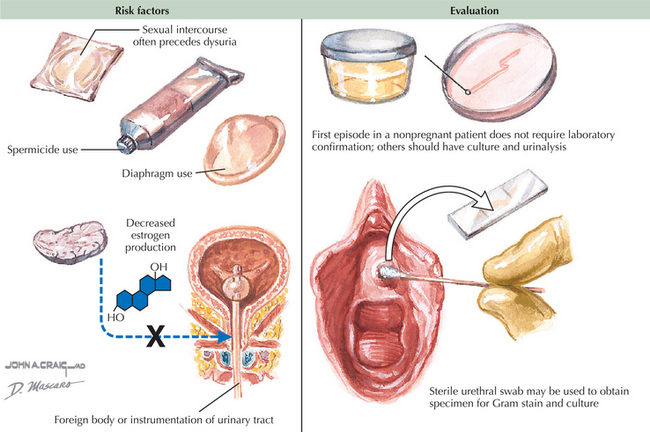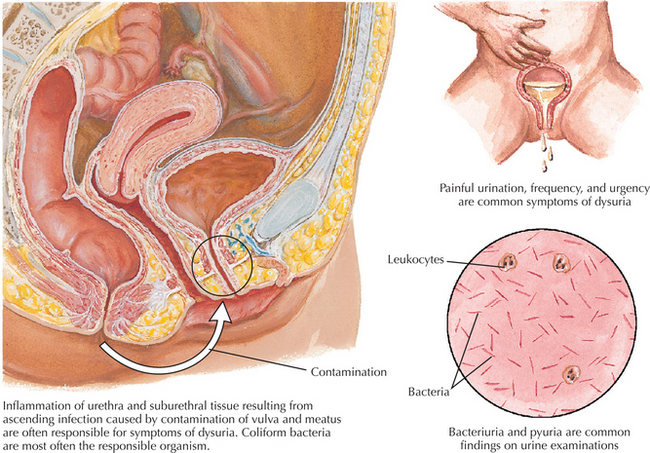Chapter 22 Dysuria
ETIOLOGY AND PATHOGENESIS
DIAGNOSTIC APPROACH
Workup and Evaluation
MANAGEMENT AND THERAPY
Nonpharmacologic
Drug(s) of Choice (Nonpregnant Patients)
FOLLOW-UP
MISCELLANEOUS
Greenberg RN, Reilly PM, Luppen KL, et al. Randomized study of single-dose, three-day, and seven-day treatment of cystitis in women. J Infect Dis. 1986;153:277.
Car J. Urinary tract infections in women: diagnosis and management in primary care. BMJ. 2006;332(7533):94.
Franco AV. Recurrent urinary tract infections. Best Pract Res Clin Obstet Gynaecol. 2005;19:861. Epub 2005 Nov 17
Mittal P, Wing DA. Urinary tract infections in pregnancy. Clin Perinatol. 2005;32:749.
Nicolle L, Anderson PA, Conly J, et al. Uncomplicated urinary tract infection in women. Current practice and the effect of antibiotic resistance on empiric treatment. Can Fam Physician. 2006;52:612.
Pappas P. Laboratory in the diagnosis and management of urinary tract infections. Med Clin North Am. 1991;75:313.
Sheffield JS, Cunningham FG. Urinary tract infection in women. Obstet Gynecol. 2005;106:1085.
Stamm W. Criteria for the diagnosis of urinary tract infection and for the assessment of therapeutic effectiveness. Infection. 1992;20(Suppl 3):S151. S160.
Stamm W. Controversies in single dose therapy of acute uncomplicated urinary tract infections in women. Infection. 1992;20:S272.
Stamm W, Hooton T. Management of urinary tract infections in adults. N Engl J Med. 1993;329:1328.
Whelan P. Manage urinary tract infections. Practitioner. 2006;250:38. 41, 43 passim.









